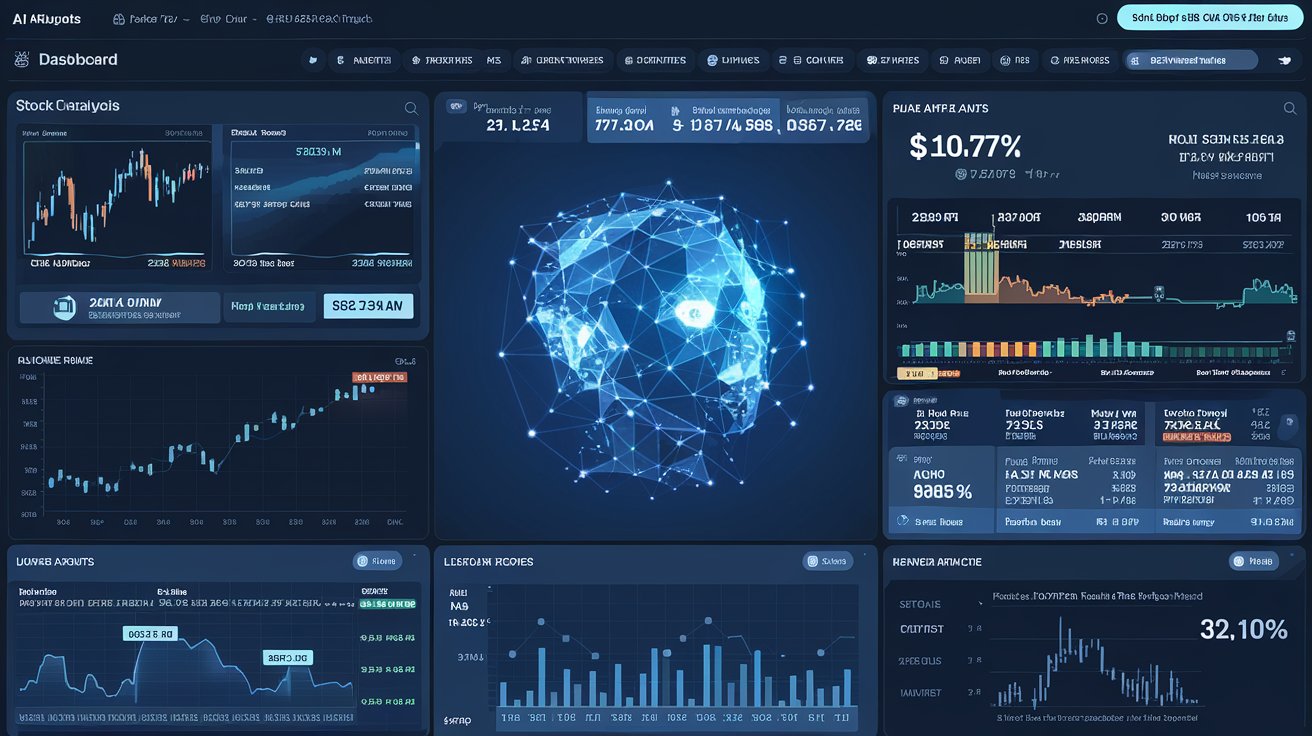In the rapidly evolving world of finance, artificial intelligence (AI) has emerged as a game-changing tool for stock analysis. As we navigate through 2024, investors and financial analysts are increasingly turning to AI-powered solutions to gain a competitive edge in the market. This article explores the various ways AI tools can be leveraged for more effective stock analysis, helping you make informed investment decisions in today’s complex financial landscape.
Understanding AI in Stock Analysis
Before diving into specific tools and techniques, it’s crucial to understand how AI is transforming stock analysis:
Machine Learning Algorithms
AI systems use sophisticated machine learning algorithms to analyze vast amounts of financial data, identifying patterns and trends that might be invisible to human analysts.
Natural Language Processing (NLP)
NLP allows AI tools to interpret and analyze textual information from news articles, social media, and company reports, providing insights into market sentiment and potential stock movements.
Predictive Analytics
AI models can forecast stock prices and market trends based on historical data and current market conditions, offering valuable predictions for investors.
Key AI Tools for Stock Analysis in 2024
1. Sentiment Analysis Platforms
Sentiment analysis tools use NLP to gauge market sentiment by analyzing social media posts, news articles, and financial reports. These platforms can provide real-time insights into how investors and analysts perceive specific stocks or the overall market.
Popular Tools:
- Sentifi
- StockPulse
- Social Market Analytics (SMA)
2. AI-Powered Stock Screeners
Advanced stock screeners leverage AI to filter stocks based on complex criteria, including fundamental and technical indicators, as well as alternative data sources.
Key Features:
- Custom screening parameters
- Real-time data updates
- Integration with AI-driven predictive models
3. Robo-Advisors with AI Capabilities
Robo-advisors are increasingly incorporating AI to offer personalized investment advice and portfolio management. These platforms can analyze an investor’s risk tolerance, financial goals, and market conditions to recommend optimal investment strategies.
Leading Platforms:
- Wealthfront
- Betterment
- Vanguard Digital Advisor
4. AI-Enhanced Technical Analysis Tools
These tools use machine learning algorithms to identify complex patterns in stock charts and technical indicators, providing more accurate buy and sell signals.
Features to Look For:
- Pattern recognition
- Anomaly detection
- Automated chart analysis
5. Alternative Data Analysis Platforms
AI tools can process and analyze alternative data sources such as satellite imagery, credit card transactions, and web scraping data to provide unique insights into company performance and potential stock movements.
Examples:
- Quandl
- Alpha Sense
- Thinknum Alternative Data
Implementing AI Tools in Your Stock Analysis Workflow
To effectively utilize AI tools for stock analysis, consider the following steps:
- Define Your Investment Strategy: Determine your investment goals and risk tolerance to choose the most appropriate AI tools for your needs.
- Data Integration: Ensure that your AI tools can access and integrate various data sources, including market data, financial statements, and alternative data.
- Backtesting and Validation: Use historical data to backtest AI-generated insights and predictions before applying them to real-world trading decisions.
- Continuous Learning: Regularly update and retrain your AI models to adapt to changing market conditions and improve accuracy over time.
- Human Oversight: While AI tools are powerful, always maintain human oversight to interpret results and make final investment decisions.
Challenges and Considerations
While AI tools offer significant advantages in stock analysis, it’s important to be aware of potential challenges:
- Data Quality: AI models are only as good as the data they’re trained on. Ensure you’re using reliable and diverse data sources.
- Overfitting: Be cautious of AI models that may be overfitted to historical data and may not perform well in new market conditions.
- Regulatory Compliance: Stay informed about regulations regarding the use of AI in financial decision-making to ensure compliance.
- Ethical Considerations: Be mindful of potential biases in AI algorithms and strive for transparent and fair investment practices.
Comparison of AI Stock Analysis Tools
| Tool Type | Examples | Key Features | Best For |
|---|---|---|---|
| Sentiment Analysis | Sentifi, StockPulse | Real-time sentiment tracking, NLP capabilities | Gauging market mood, identifying potential market-moving news |
| AI Stock Screeners | FinScreen AI, Tickeron | Custom screening, predictive analytics | Discovering investment opportunities, filtering stocks based on complex criteria |
| Robo-Advisors | Wealthfront, Betterment | Personalized advice, automated rebalancing | Long-term investors, hands-off portfolio management |
| Technical Analysis | TrendSpider, Trade Ideas | Pattern recognition, automated chart analysis | Active traders, technical analysts |
| Alternative Data | Quandl, Alpha Sense | Unique data sources, predictive insights | Hedge funds, institutional investors seeking an edge |
Conclusion
As we progress through 2024, AI tools are becoming increasingly sophisticated and integral to effective stock analysis. By leveraging sentiment analysis, AI-powered screeners, robo-advisors, enhanced technical analysis tools, and alternative data platforms, investors can gain valuable insights and make more informed decisions in the complex world of stock trading.
However, it’s crucial to remember that AI tools are most effective when combined with human expertise and judgment. The key to success lies in understanding the capabilities and limitations of these tools, integrating them thoughtfully into your investment strategy, and maintaining a balanced approach that combines technological innovation with sound financial principles.
As the field of AI in finance continues to evolve, staying informed about the latest developments and continuously adapting your approach will be essential for maintaining a competitive edge in the stock market. By embracing these powerful AI tools while maintaining a critical and ethical perspective, investors can navigate the challenges and opportunities of the modern financial landscape with greater confidence and potential for success.

